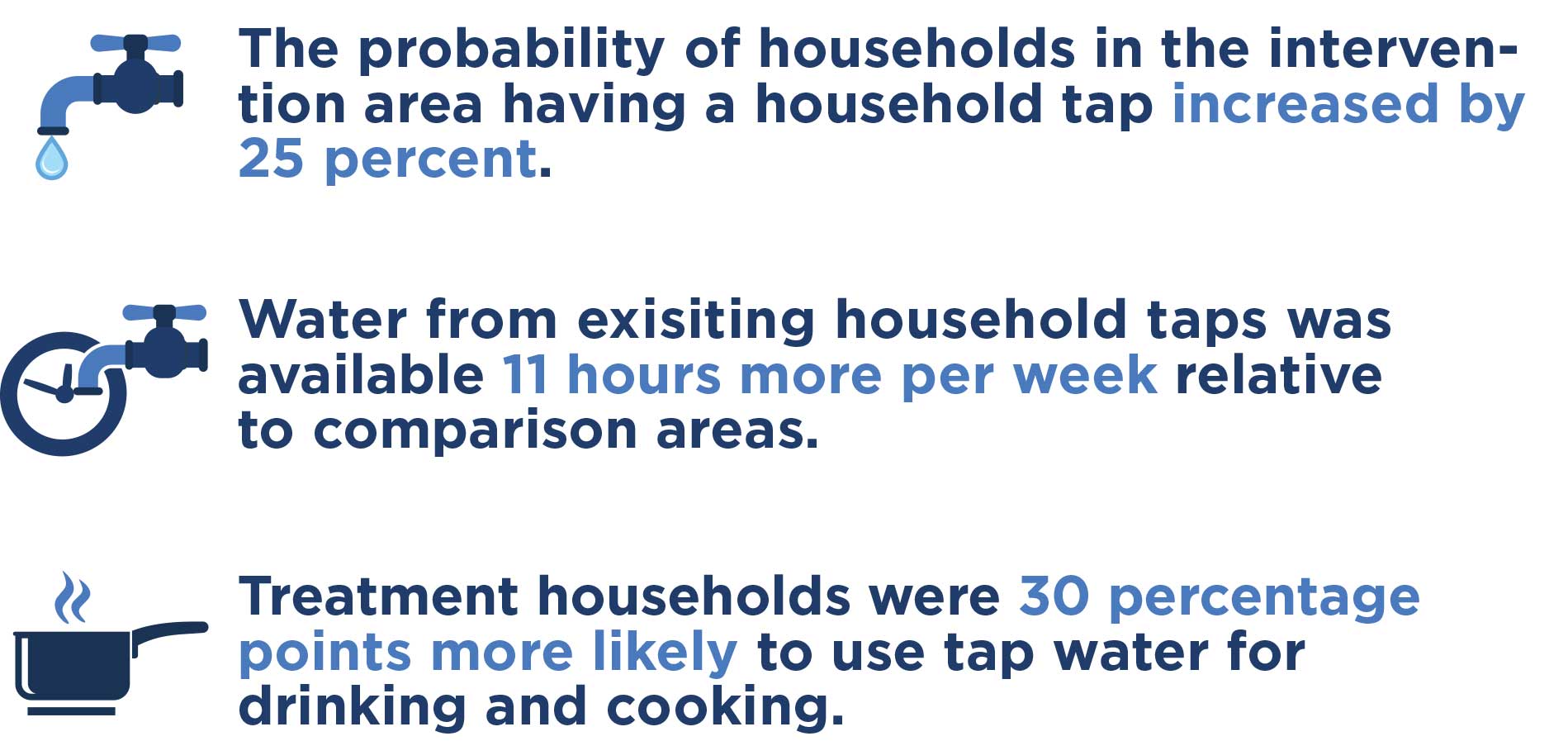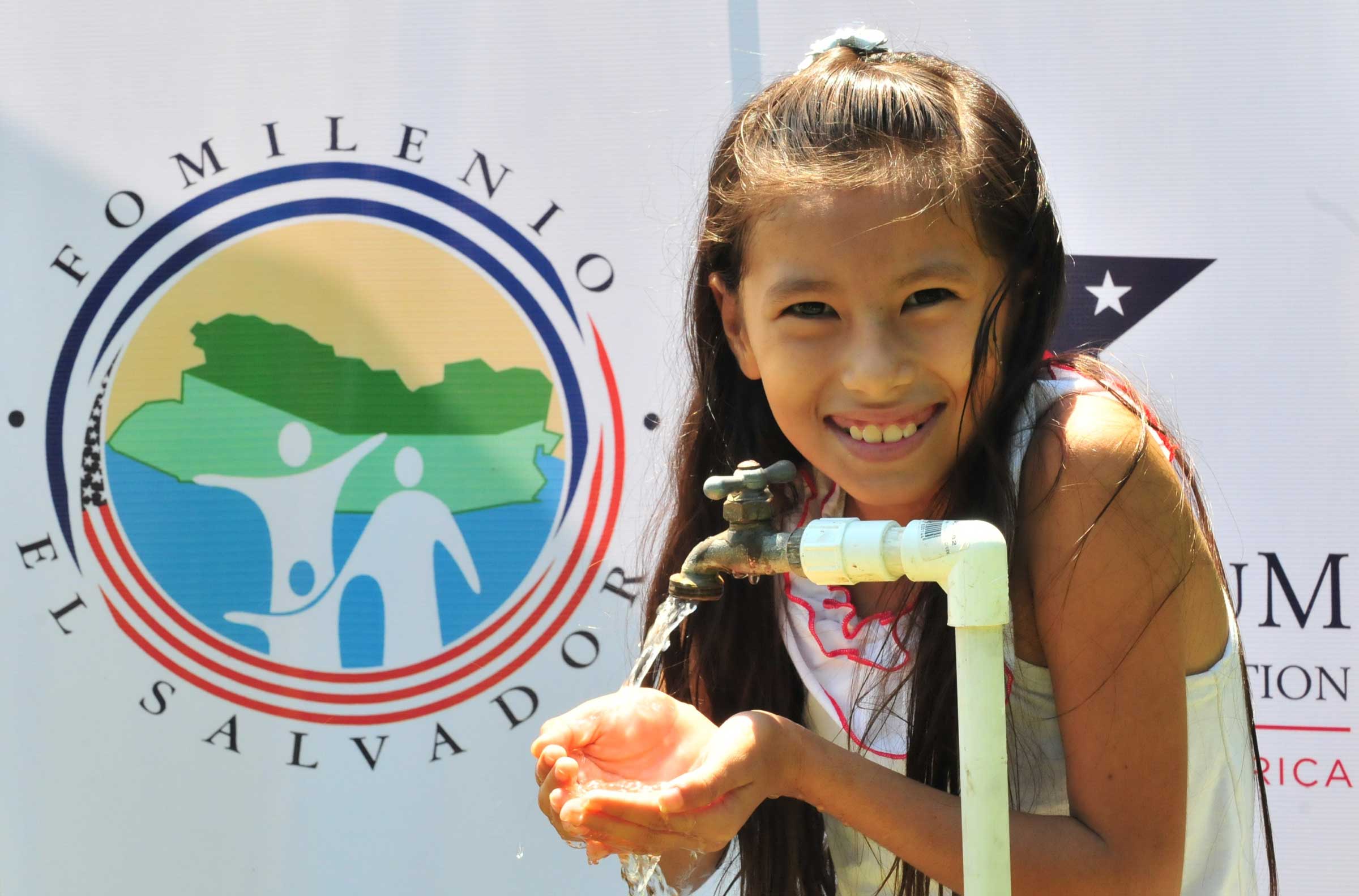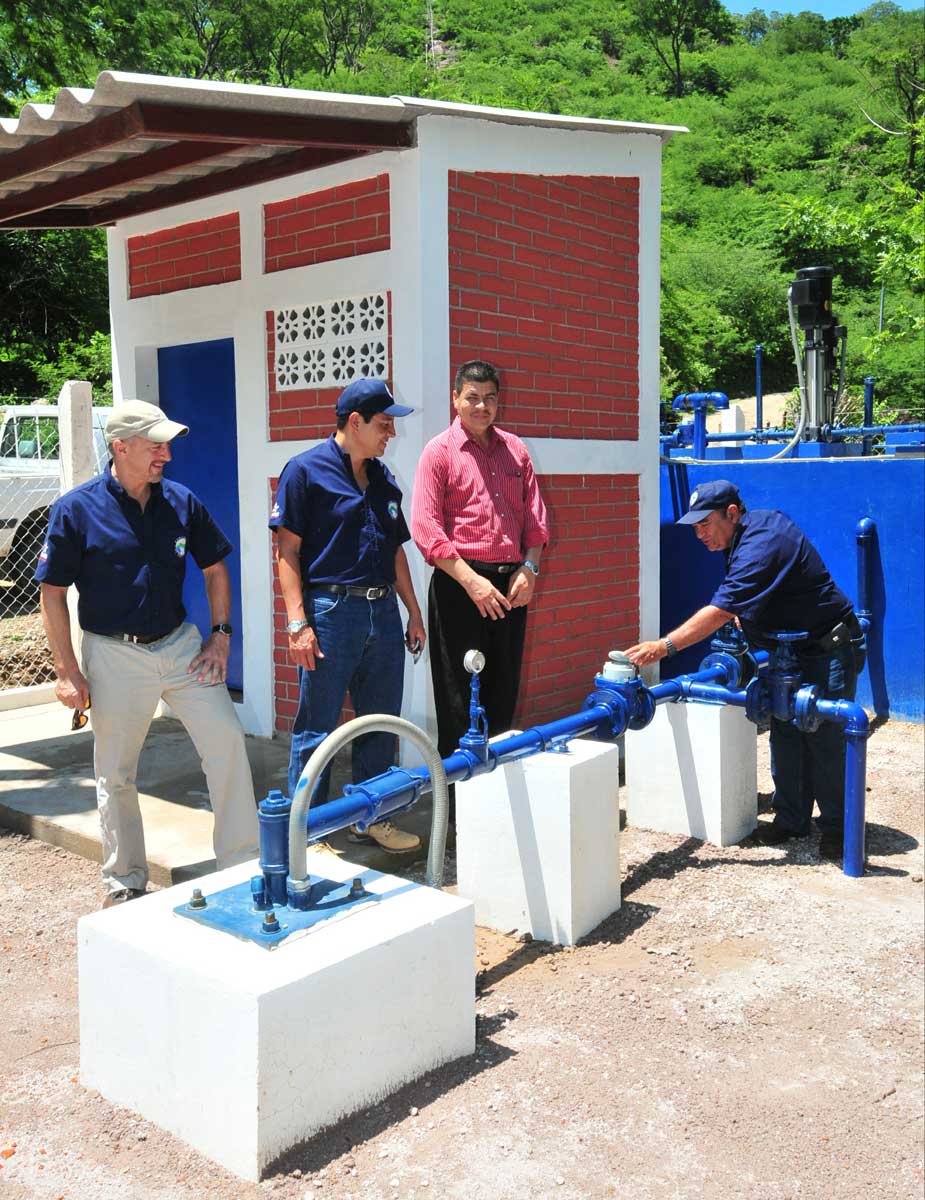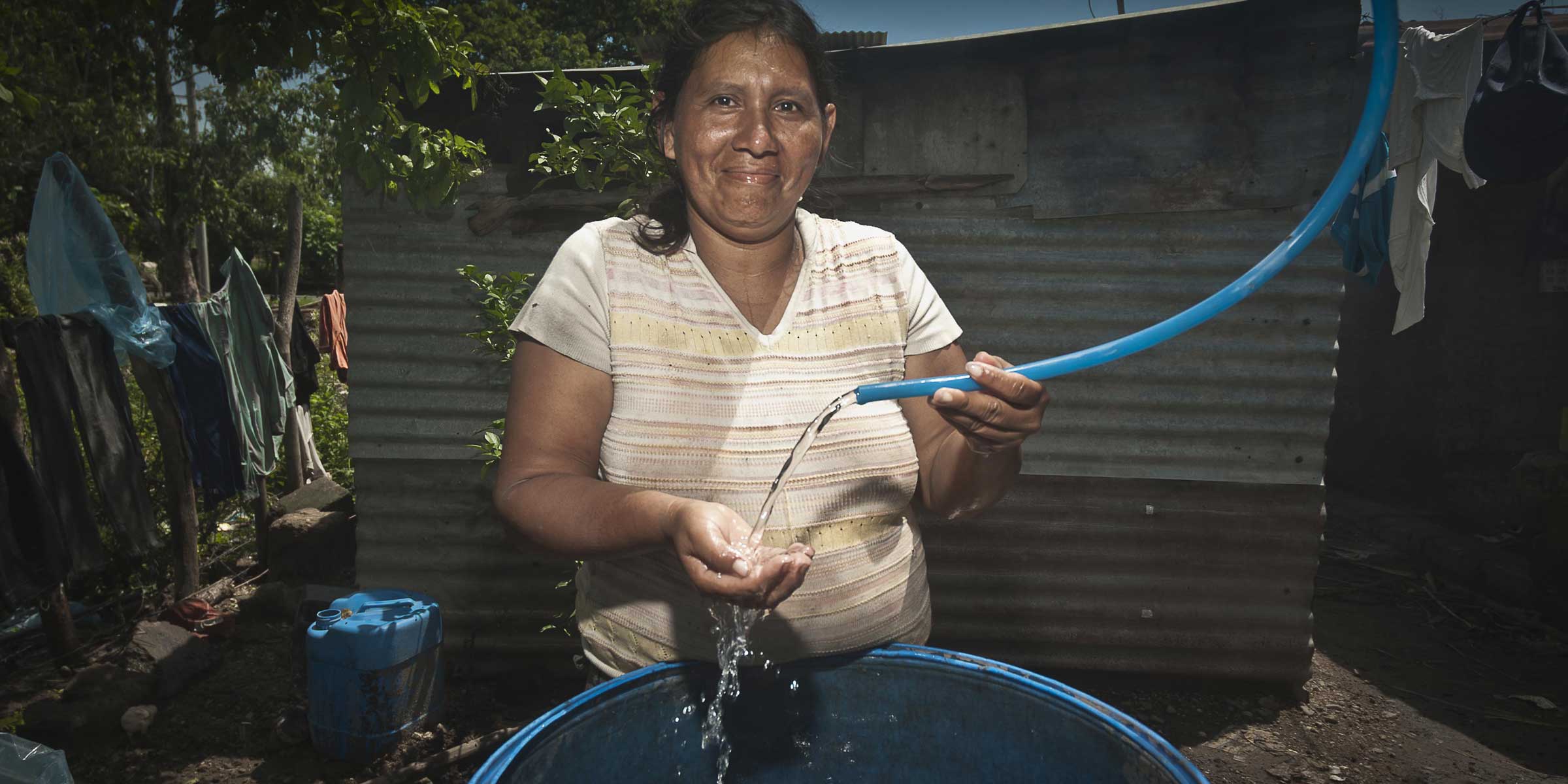Program Overview
MCC’s $449.6 million El Salvador Compact (2007-2012) funded the $16.6 million Water and Sanitation Sub-Activity to increase the human and physical capital of residents of the Northern Zone to take advantage of employment and businesses opportunities by providing new or improved piped water and latrines to households. This included installing piped water connections to 8,168 households along with latrines where needed. The sub-activity was built on the theory that improved access to water and sanitation would lower coping costs, such as expenditures on water from trucks and time spent to retrieve water from outside the household, as well as reduce diarrheal illness, which in turn would lead to increased household income.
Evaluator Description
MCC commissioned Social Impact with the University of Maryland to conduct an independent final impact evaluation of the Water and Sanitation Sub-Activity. Full report results and learning: https://data.mcc.gov/evaluations/index.php/catalog/107.
Key Findings
Water and Sanitation Access and Use
- The water projects significantly increased the number of piped water connections and the reliability of existing connections relative to the comparison group. There was no effect detected on the amount of water consumed. However, the probability of a household using tap water for drinking and cooking increased by 30 percentage points relative to the comparison group.
- The probability of having improved private sanitation increased slightly, by about 3 percentage points, relative to the comparison group. Children between the ages of three to six years old were 16 percent more likely to use sanitation facilities frequently.
Time and Cost Savings and Productivity
- Time spent collecting water decreased by three hours per week relative to the comparison group.
- Expenditures on water increased by about $2 per month, even though expenditures on water from trucks and chlorine for water treatment decreased, relative to the comparison group.
- There was no evidence of increased time spent on income-earning activities, including wage labor or working at a household business, relative to the comparison group.
Education and Health
- There was no evidence of increased school enrollment or attendance for school-aged children relative to the comparison group.
- There was an increase in residual chlorine levels for household drinking water relative to the comparison group, but the level of chlorine was still lower than the recommended amount.
- There was no evidence that the diarrhea rate among children under five decreased relative to the comparison group.
Household Income
- There was no evidence of increased household income relative to the comparison group.
Evaluation Questions
This final impact evaluation was designed to answer the following questions, which are a subset of the full list of evaluation questions.
- 1
Do water and sanitation interventions reduce coping costs, such as expenditures and time to obtain water? - 2
Do water and sanitation interventions increase school enrollment and attendance? - 3
Do water and sanitation interventions reduce incidence of diarrheal illness? - 4
Do water and sanitation infrastructure investments increase household expenditure or income?
Detailed Findings
Water and Sanitation Access and Use

The water projects significantly increased the number of piped water connections and the reliability of existing connections relative to the comparison group. The probability of a household in the intervention area having a household tap increased by 25 percent and water from existing household taps was available at least 11 hours more per week relative to comparison areas. Households did not consume a larger amount of water relative to the comparison group. However, households did shift the source of the water consumed to household taps rather than less convenient sources like a public well—households were 30 percentage points more likely to use tap water for drinking and cooking relative to the comparison group. Prior to the project, baseline sanitation levels were high with over 80 percent of the treatment area having private sanitation facilities. After the project, the probability of having improved private sanitation increased slightly by about 3 percentage points. However, relative to the comparison group, children between the ages of three to six years old were 16 percent more likely to use sanitation facilities frequently after the project.
Time and Cost Savings and Productivity

Time spent collecting water by households who collected water before the project decreased by three hours per week relative to the comparison group. Time spent collecting water reduced by more than half of the time spent collecting water before the project. Women who did laundry outside the home before the program saved an additional two hours a week. Expenditures on water increased by about $2 per month even though there was a reduction in expenditures on water from trucks and chlorine for water treatment. There was no evidence of increased time spent on income-earning activities, including wage labor or working at a household business.
Education and Health

There was no evidence of increased school enrollment or attendance for school-aged children relative to the comparison group; however, baseline levels of enrollment were already 95 percent for children between the ages of 7 and 12. Households living in treatment segments were 9.4-11 percent more likely to have chlorine in their drinking water than the comparison group, but the level of chlorine was lower than the recommended amount. The proportion of samples with bacterial contamination was lower in project areas relative to the comparison group, but the proportion remained very high—suggesting contamination at the storage point. There was no evidence that the intervention reduced the diarrhea rate among children under five. This may be due to the fact that the diarrhea rates had already decreased substantially before the program was implemented: The baseline prevalence rate of diarrhea for municipalities that were eligible for the program was 4 percent of the general population.
Household Income
There was no evidence of increased household income relative to the comparison group. The evaluation found a small increase in consumption expenditures relative to the comparison group, but the data did not support a clear mechanism that would link the increase in consumption to the water and sanitation interventions.

A Salvadoran girl enjoying water from a new MCC water project.
MCC Learning
Providing private water connections for households can be effective at freeing up time for household members, but additional interventions may be necessary to turn that time into productive time for the household.
If low-density regions are targeted for expensive water and sanitation interventions, the benefits are unlikely to justify the project cost. As a result of this and similar studies, MCC is being more aggressive about seeking more cost-effective solutions.
Evaluations should be designed to answer “why not” if impacts do not occur as expected, such as explaining why household water was still contaminated after the project or why time savings did not result in higher incomes.
Evaluation Methods

MCC and local implementing staff inspecting a new MCC water project.
The final impact evaluation uses a difference-in-differences methodology to estimate impacts of the Water and Sanitation Sub-Activity. The water projects did not fit within formal administrative units in El Salvador, so the evaluation used census segments for sampling purposes. Sixty-five census segments were selected for inclusion in the evaluation to cover 45 of the 73 water projects. Comparison segments were identified and matched to treatment segments with propensity score matching, using data from the 2007 census.
The impact evaluation sample included 65 treatment and 65 comparison segments with an exposure period of 6 to 24 months.
The impact evaluation relied on a panel data set consisting of a 2011 baseline survey and two follow-up surveys from 2012 and 2013.
The specific surveys and sample sizes were:
- Household surveys sampled approximately 3,200 households in 65 treatment and 65 comparison segments in 2011, 2012, and 2013.
- In-house chlorine test kits used in all sampled households in the household surveys in 2011, 2012, and 2013.
- Water quality samples tested bacterial contamination in 800 households from the household survey and from approximately 250 water sources in 2011, 2012, and 2013.
2019-002-2228


